2025 is all about brand building. At Ahrefs, we’ve already been doing that for over a decade, but there’s never been a better time for us to ramp things up.
After writing an article on 11 ways to measure brand awareness, I figured now’s also the perfect time for us to get a clearer picture of where we stand today, so we have something solid to measure against when those brand wins come rolling in 😉
I needed a reliable way to track Ahrefs’ brand performance—regularly and over time.
Luckily for me, we already have a Looker Studio Template hooked up to all our main tools via the API, which made it easy to create a live, auto-updating dashboard of the key organic brand metrics I cared about.
Below, I show you exactly how to replicate this for your own brand.
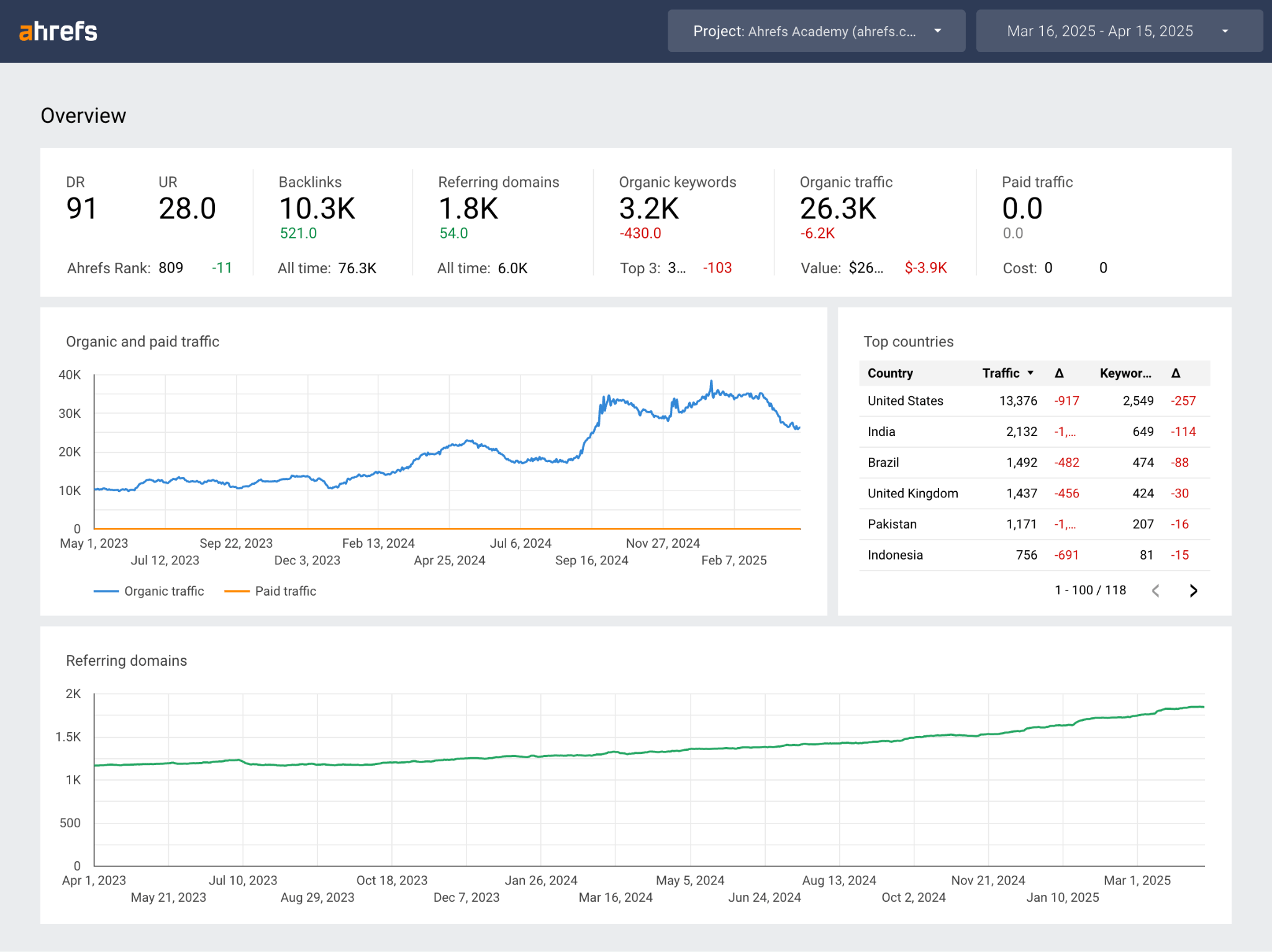
Rank Tracker is useful for overview stats and project-level analysis. It helps you track SoV against competitors, SERP Feature ownership, and positions across a specific set of keywords.
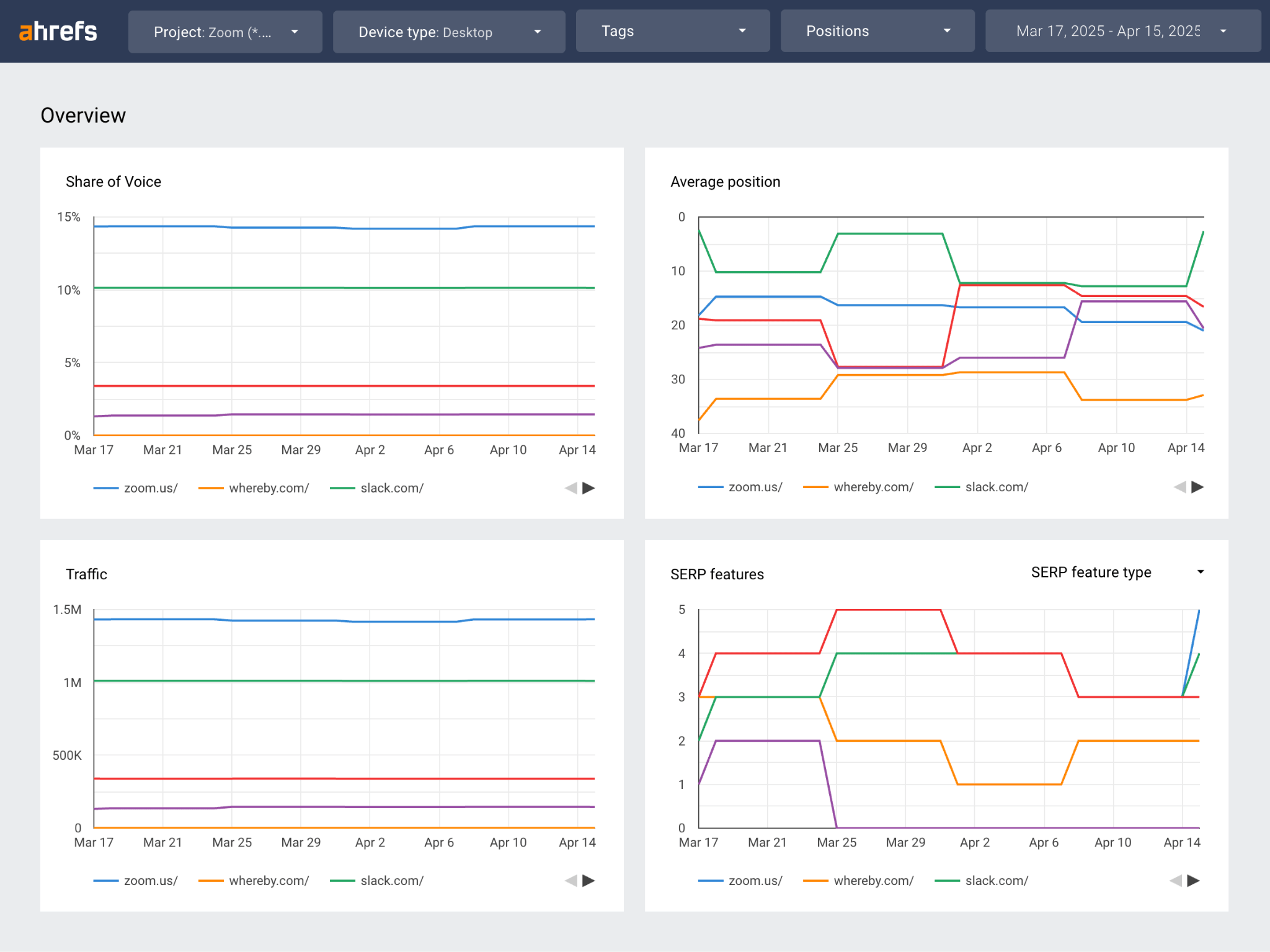
Site Audit is useful when you want to go deep into the technical SEO side of things. It gives you indexability insights, on-page content issues, and core web vitals status updates.
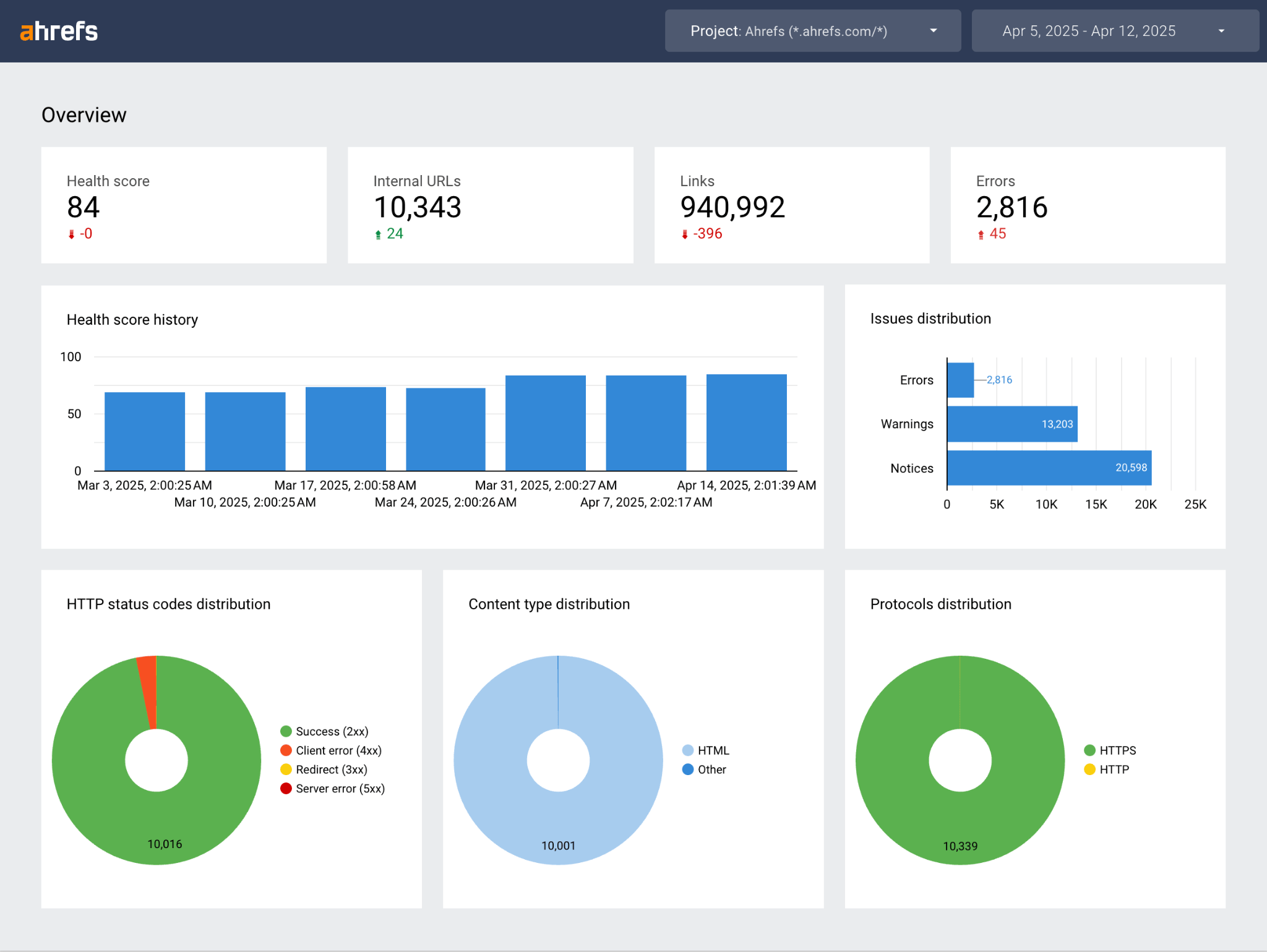
I mostly wanted to monitor broad brand metrics, so I started off with the Site Explorer template, and then fed in Rank Tracker data to home-in on some of our most important keywords.
To adapt a template, just click on the three dots on the right and click “Make a copy”.
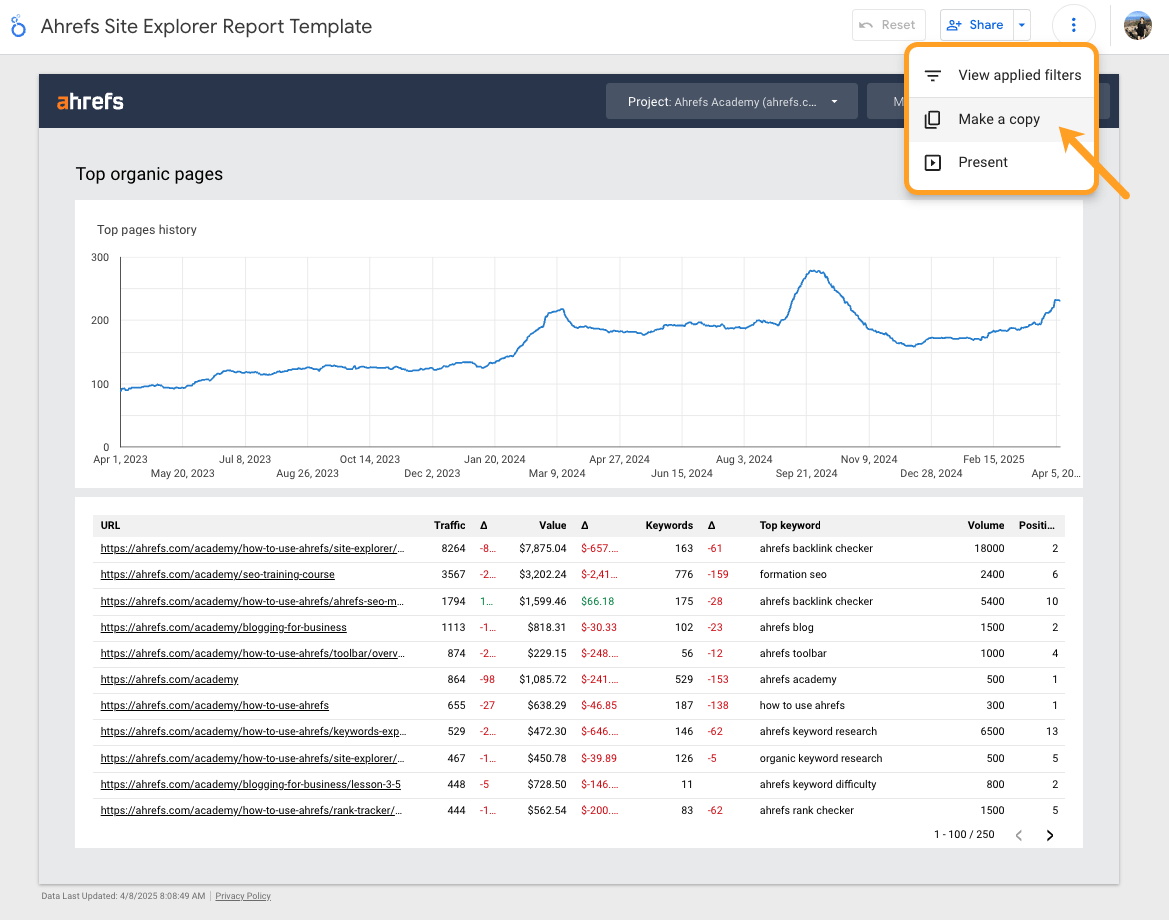
Then under “New data source” click “Create data source”…
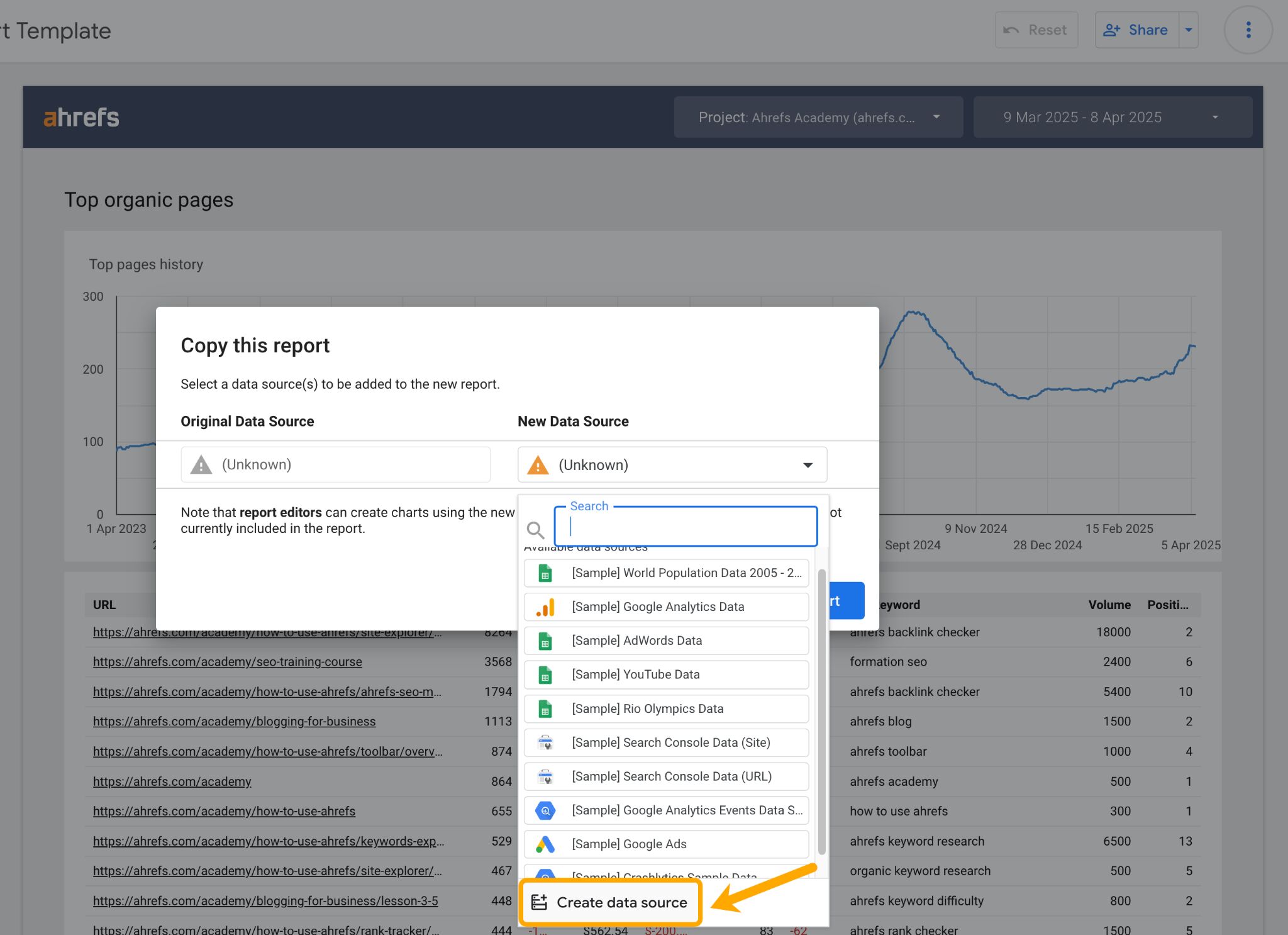
…and search for your chosen Ahrefs data connector.
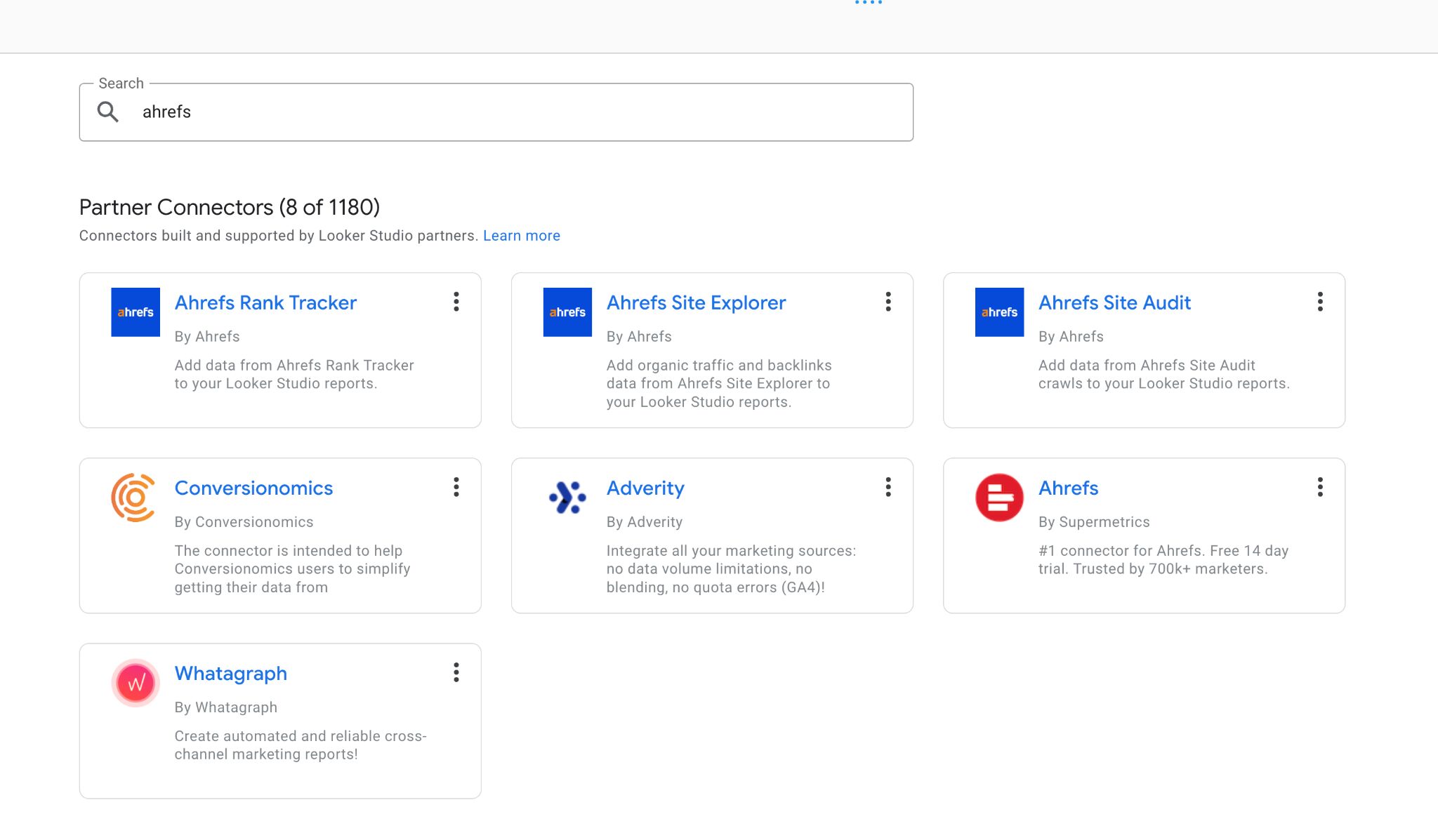
Choose your project, and leave all other fields blank—you can adjust them later on in the actual report. 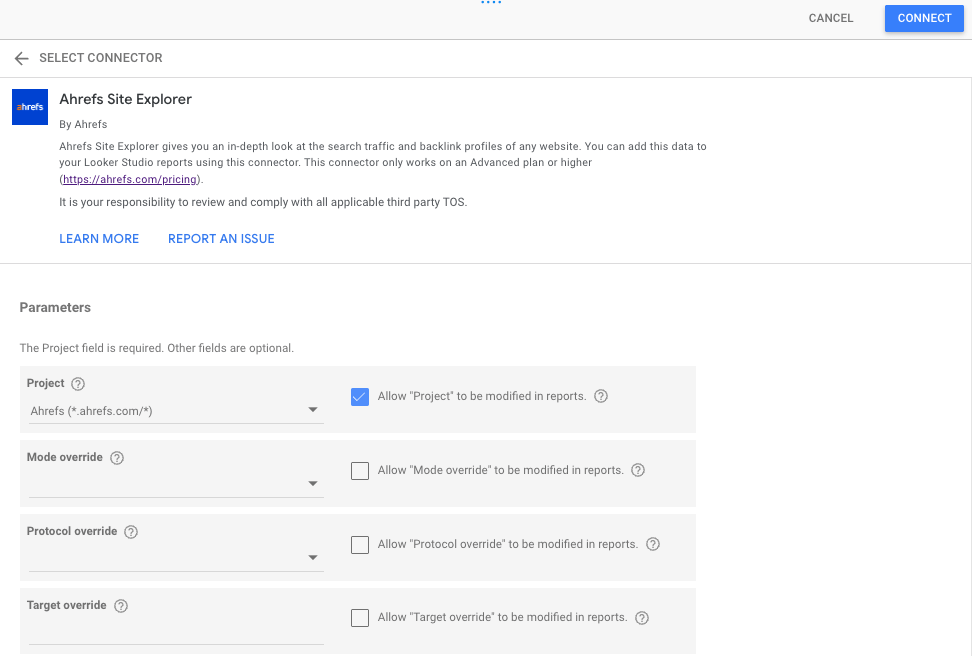
The exception to this rule is if you’re adding “Rank Tracker” as a data source. In this case, you’ll need to select a “Device type” before you can “Connect”.
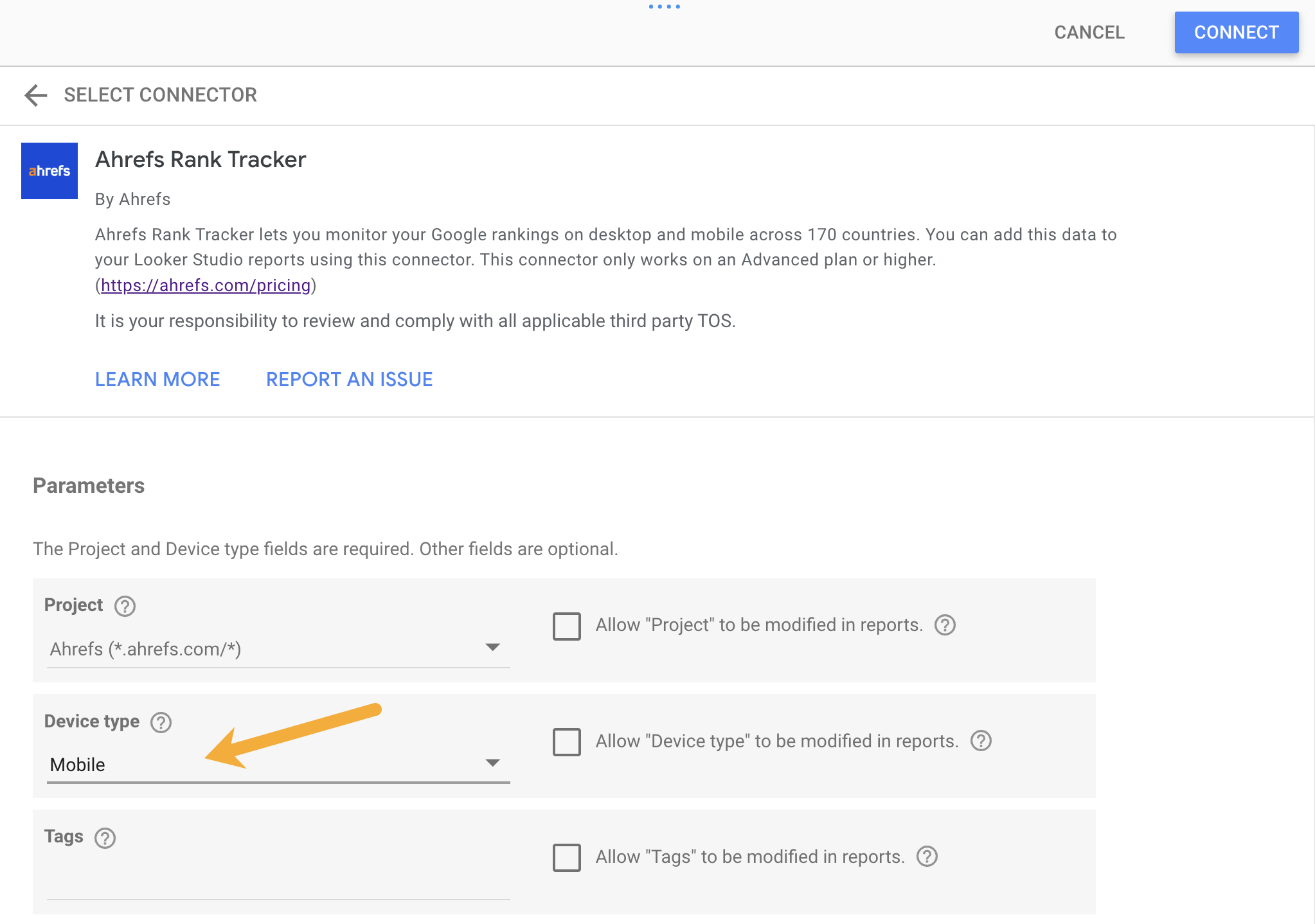
On the next screen, hit “Add to report”.
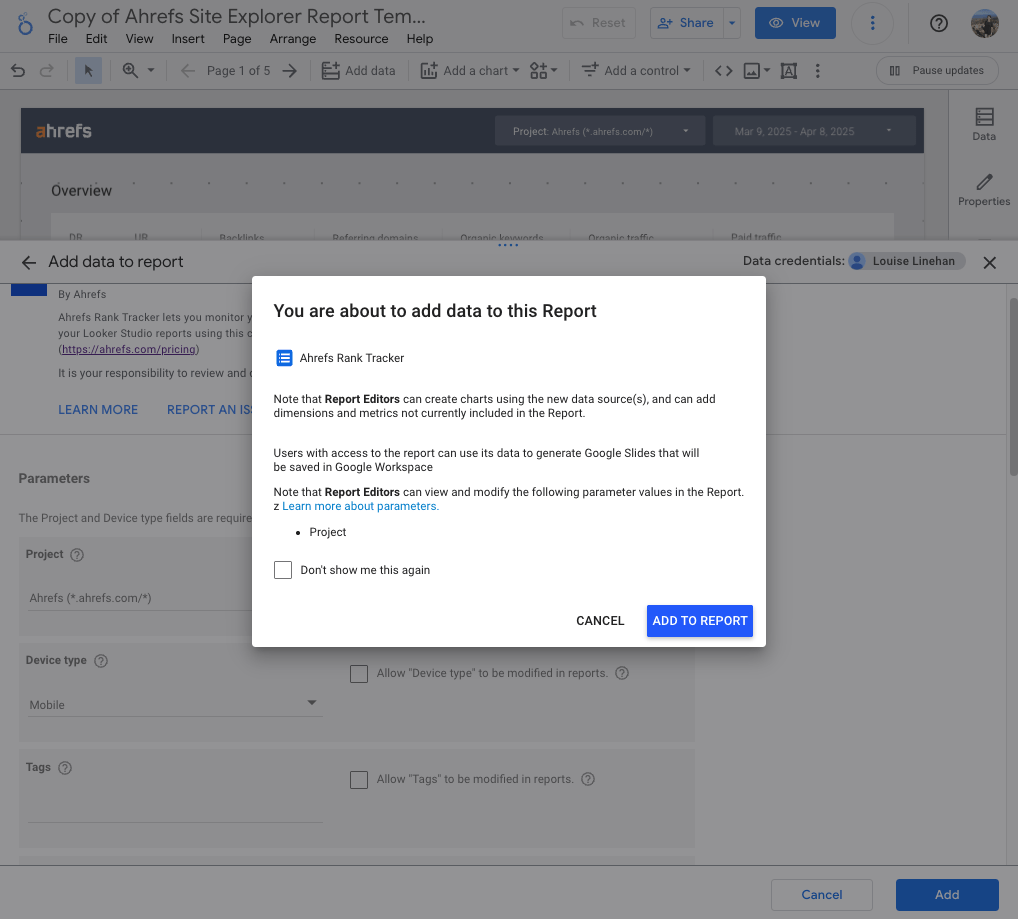
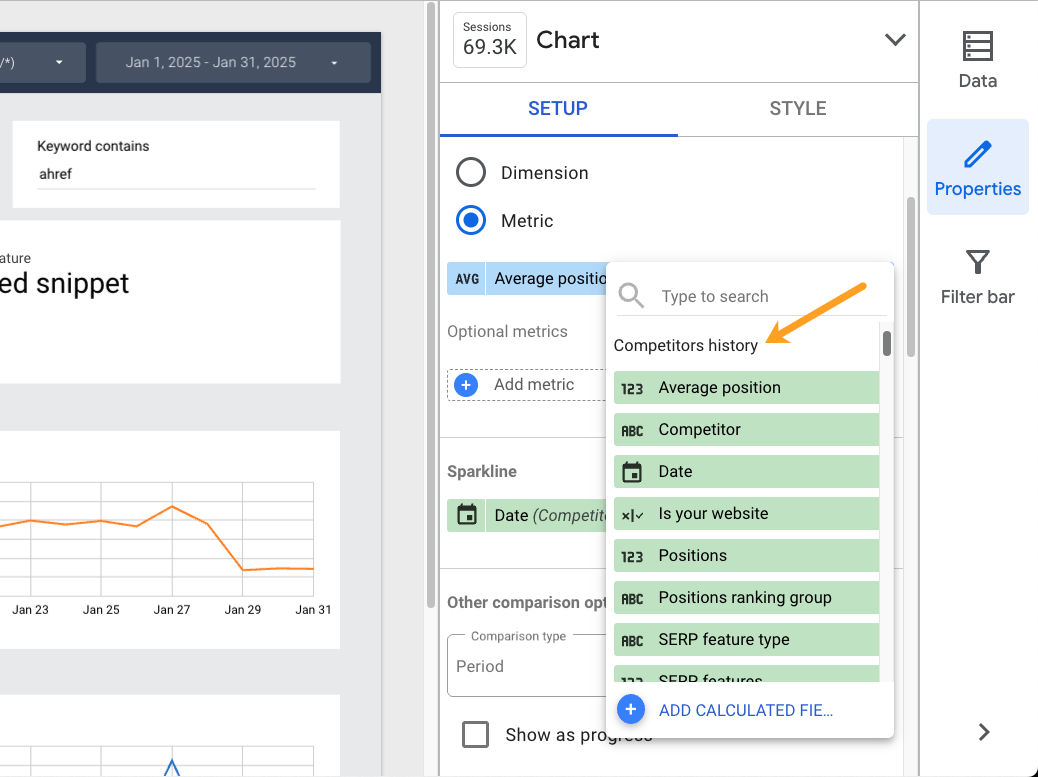
This way you can quickly spot-check your brand positions, SERP features, share of voice, and traffic, and monitor any growth or decline with “sparkline” visuals.

Finally, set up an “Is your website filter” to monitor only your site, and sift out any competitors you track in your project.
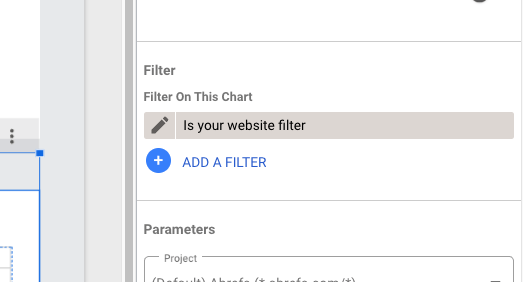
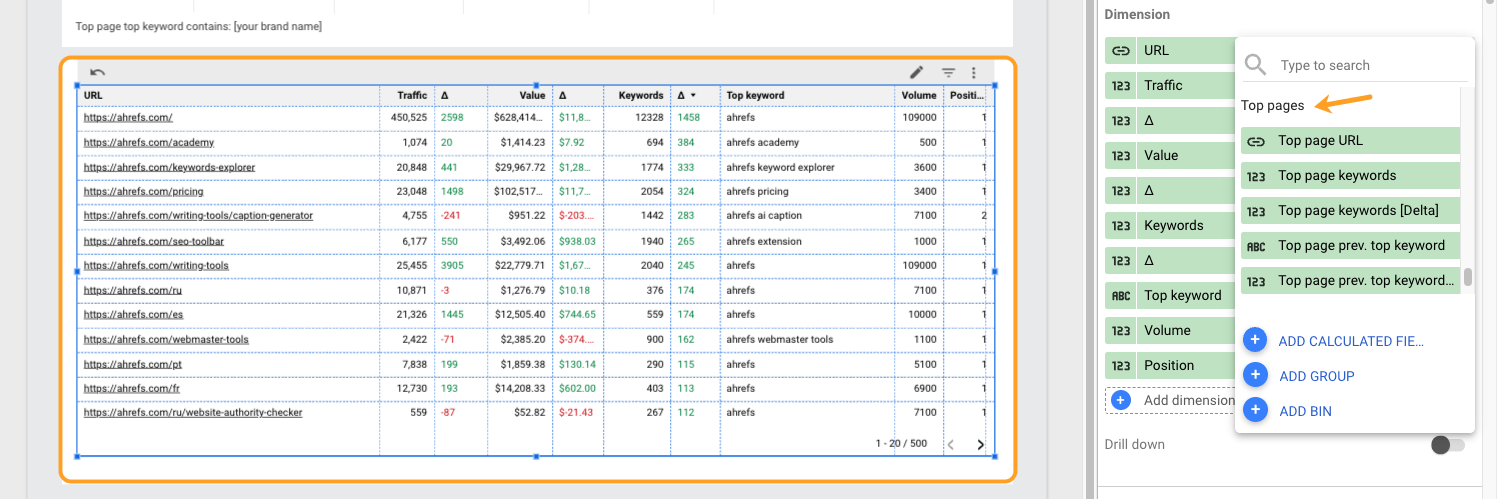
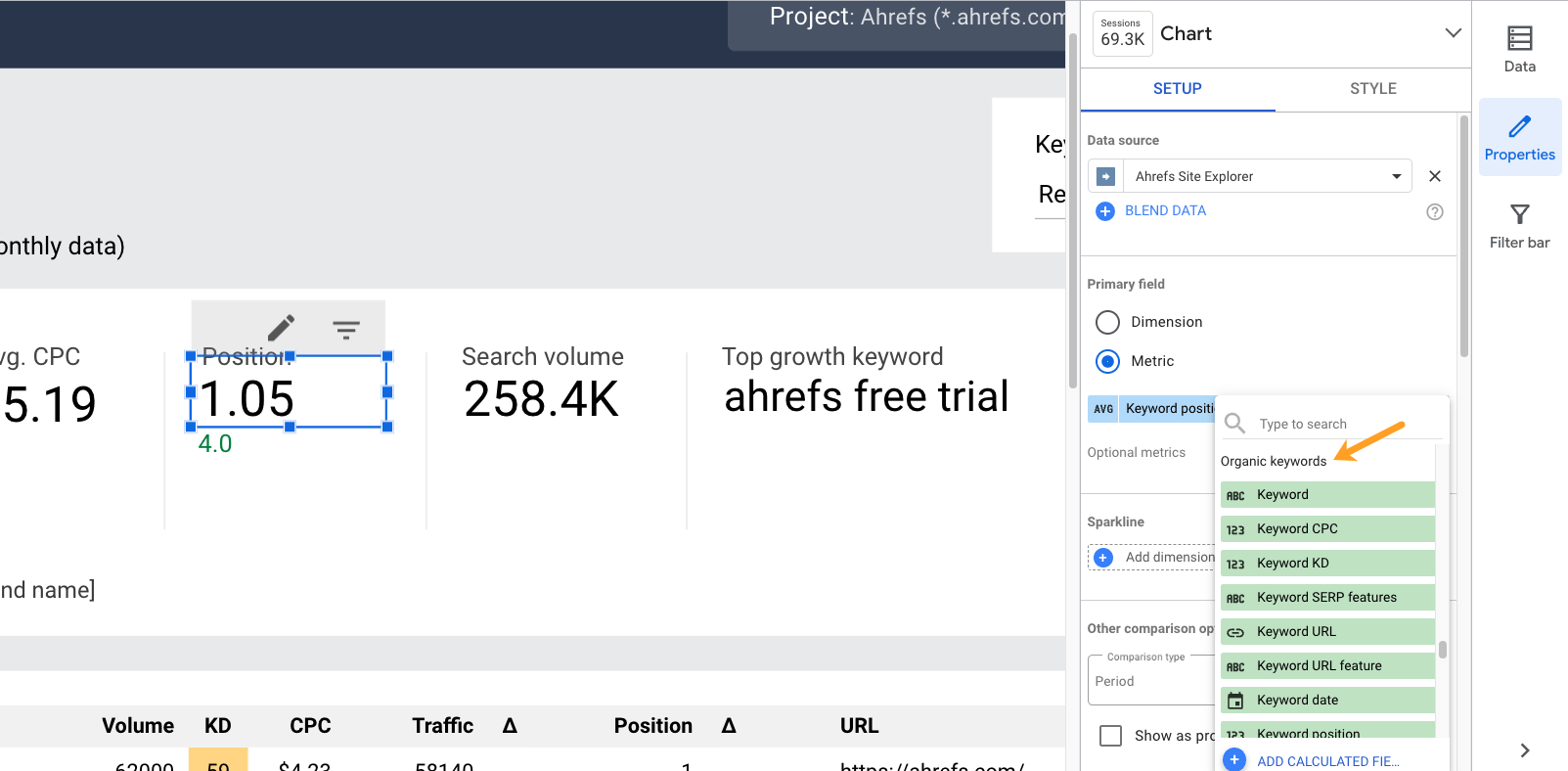
Then create a pie chart to visualize your SERP Feature ownership.
1. Add “Keyword URL feature” as the dimension
2. Add “Keyword” as the metric
3. Add “Keyword” as the sort feature (by descending)
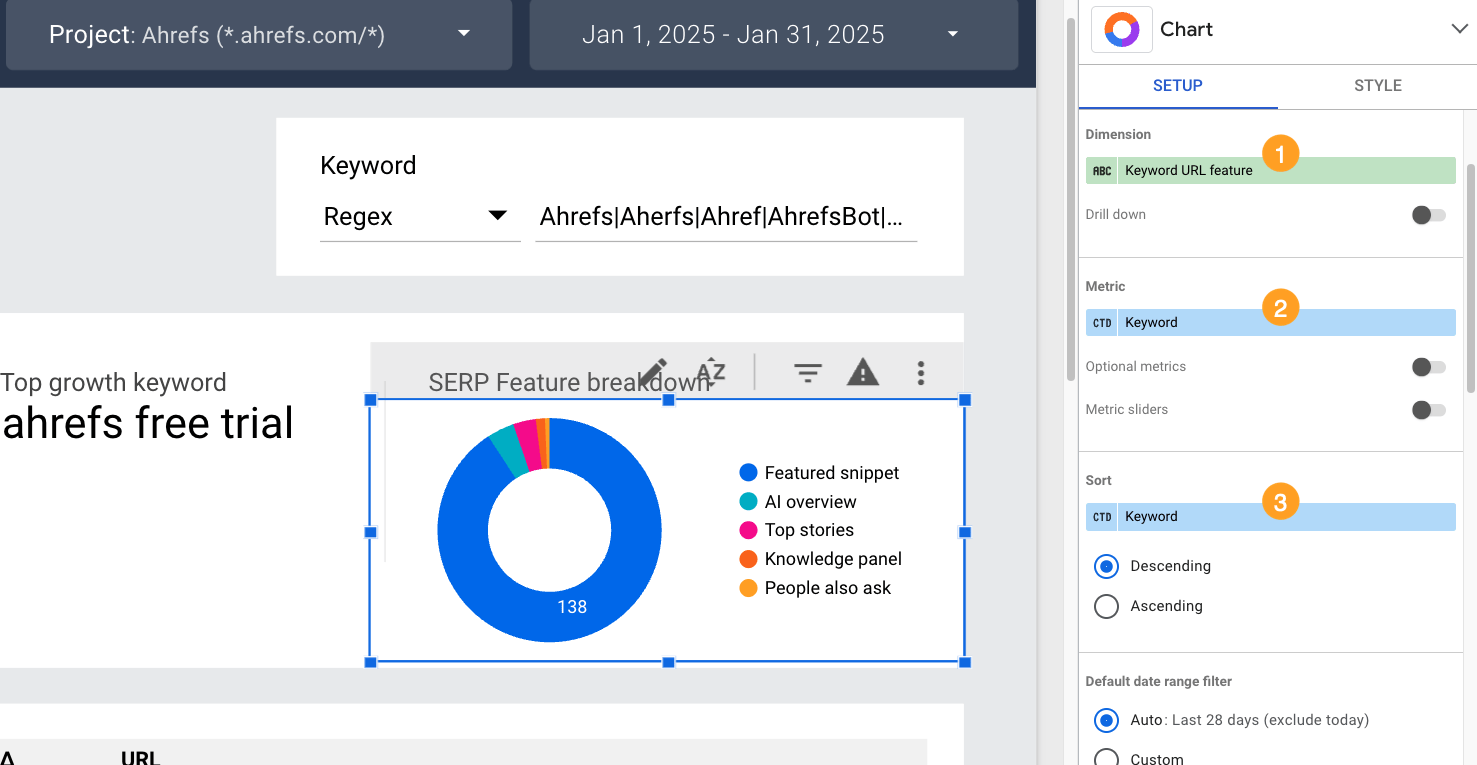
4. Add a filter “Keyword URL remove blanks” (Exclude → Keyword URL feature → Is Null)
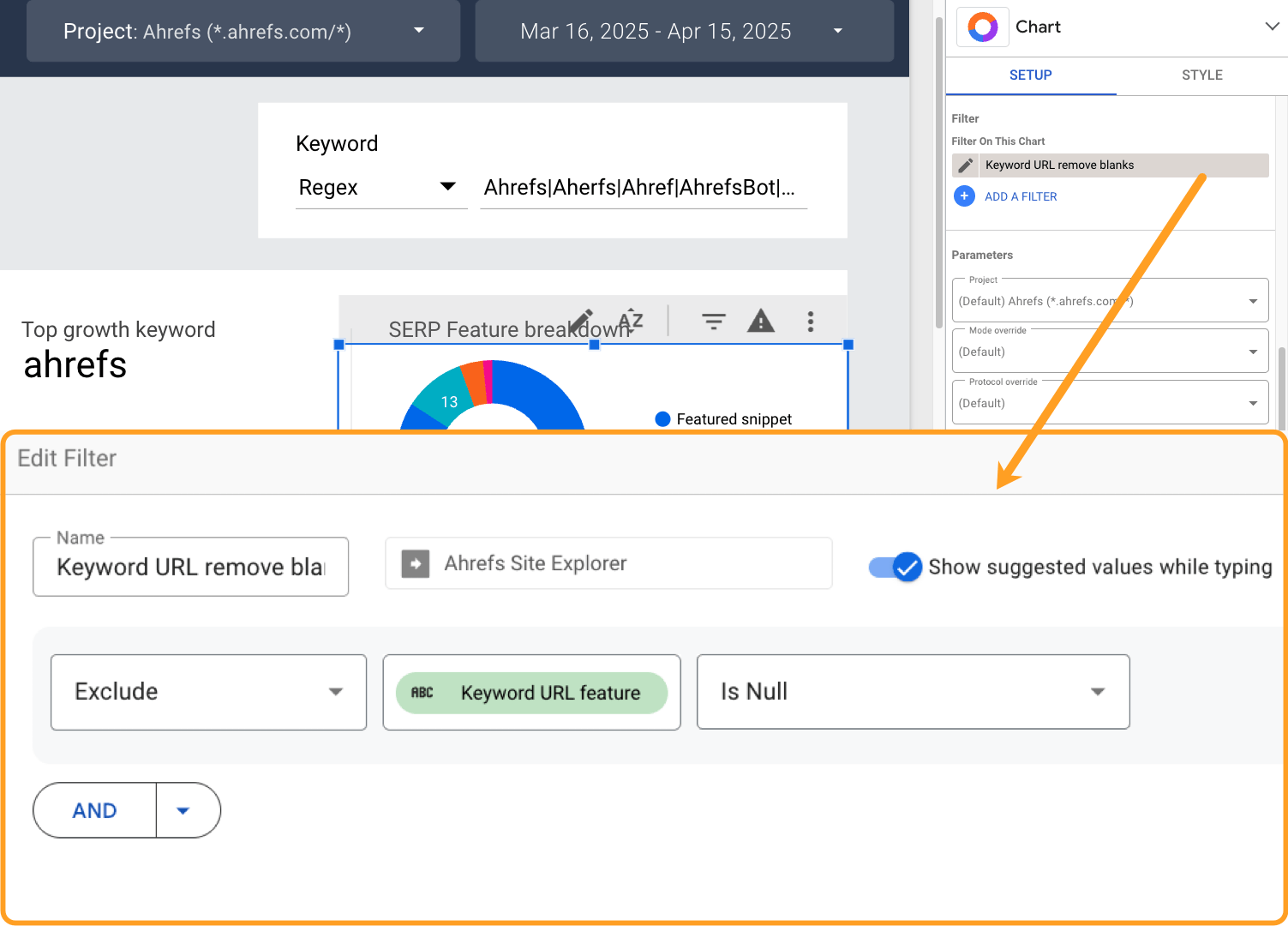
Then build a simple table of keyword performance data, including metrics like volume, keyword difficulty (KD), positions, traffic, and traffic growth, so you can see the data behind performance peaks and troughs.
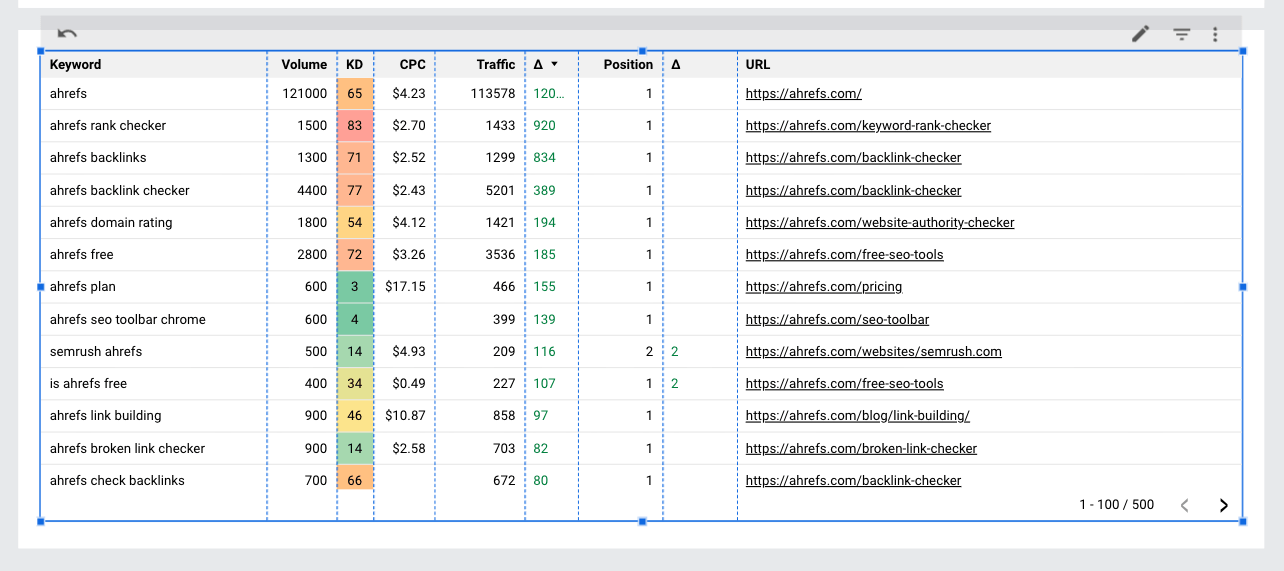
5. Test brand content optimizations
If you’re experimenting with including your brand name more frequently alongside relevant phrases, ideas, and features—like in titles, meta descriptions, or on-page copy—you can use the dashboard to see whether it’s improving your branded keyword performance.
Wrapping up
We’re living in a brand-first era. Brand is increasingly a top funnel and bottom funnel play—it drives both discovery and conversions.
Without brand awareness, you will be invisible in search, LLMs, and buyer discussions.
You can’t optimize what you don’t measure. With AI reshaping the landscape, it’s critical to monitor your brand presence now.
Have a go at creating your own brand awareness report with Ahrefs Looker Studio template, and let me know how you get on.
Similar Posts

What Is Domain Management? The Beginners’ Guide
New to all things domain management? We’ll take you under our wing with our beginners’ guide to why it matters, plus some handy tips. Hey there, curious about domain management? You’ve come to the right place. In this beginner’s guide, we’ll dive into what domain management is all about and why it matters for your…
Drush Custom Command Tutorials Updated
Last week we updated most of the Drupal Plugin API content to recommend, and demonstrate, using PHP attributes instead of annotations. This week I’m back with another update doing the same thing for our content on creating custom Drush commands. Which now also use PHP attributes instead of annotations. The big changes to this set…
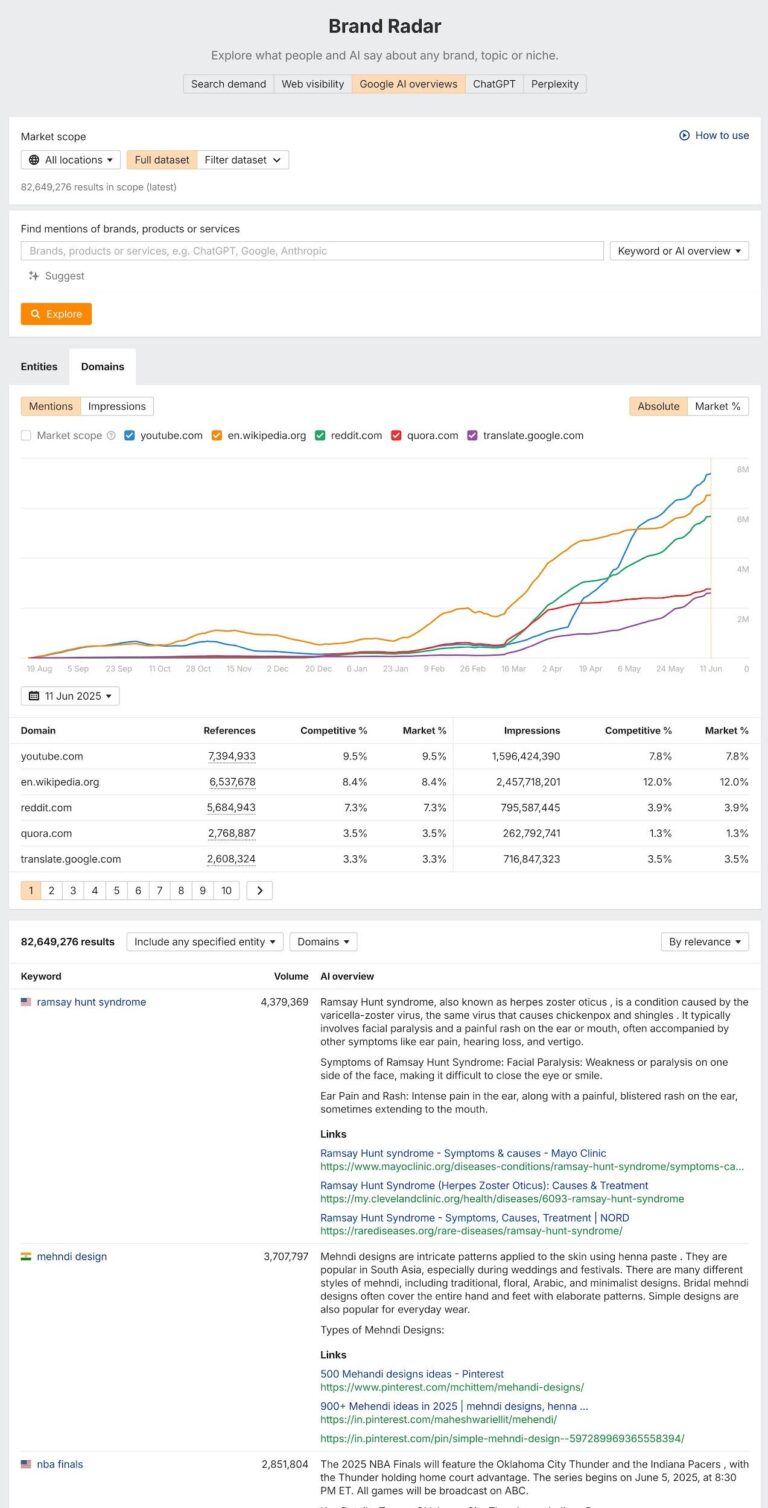
Websites With More Organic Search Traffic Get Mentioned More in AI Search
I don’t think this result will come as a surprise to anyone. Websites that get more traffic in traditional organic search also get mentioned more in AI Search. Popular sites are popular, even if the search system changes. I looked at the top 50 websites mentioned in Ahrefs Brand Radar for Google AI Overviews, ChatGPT,…
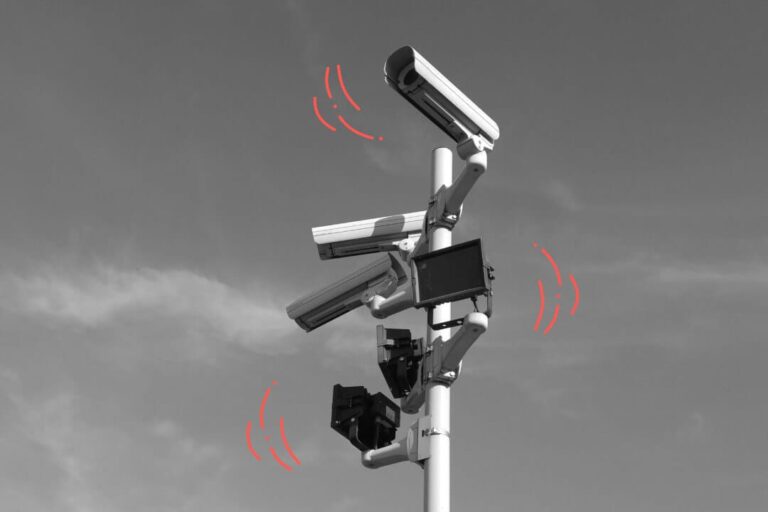
What is Domain Privacy Protection & Do I Need It? A Guide to Protecting Information
In this article, we explore what domain privacy protection is and why it matters. You’re busy securing your domain. It’s the name you’ve always wanted, so you’re super excited. Then, you notice the option to add domain privacy protection. Wait… say what, now? Domain privacy protection? Well, domain privacy protection is just what it says…

Is .ai a Good Domain? A Quick Overview of one of the Hottest Domain
If you read nothing past this sentence, then here’s the quick summary: .ai is a good domain for people wanting a home for tech and artificial intelligence work. Done. You can go home now. But if you want to know more (or are second-guessing yourself) let us put your mind at ease by showing why…
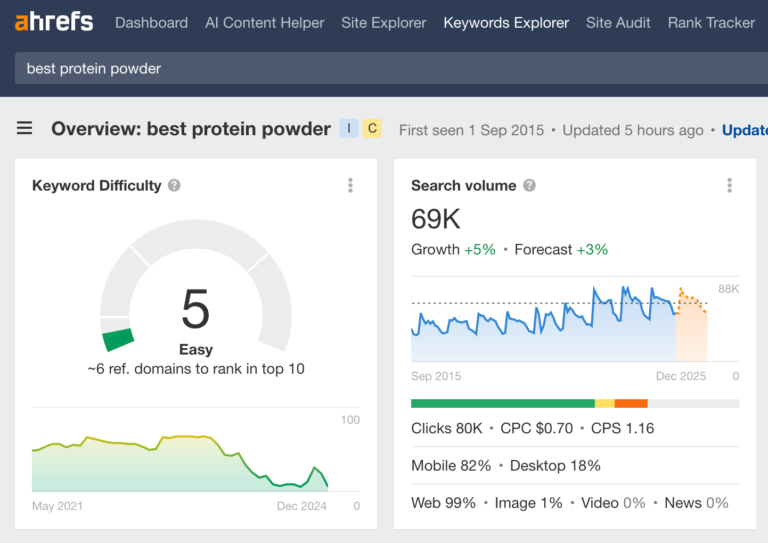
Why I Wouldn’t Start Affiliate Marketing in 2025 (And What I’d Do Instead)
Back in the day, I ran a couple of semi-successful affiliate websites. I even once ranked #1 for “best protein powder.” This was a pretty lucrative keyword given its commercial intent and high search volume. Ever since then, the idea of starting another affiliate site and getting serious about it has always been in the…
